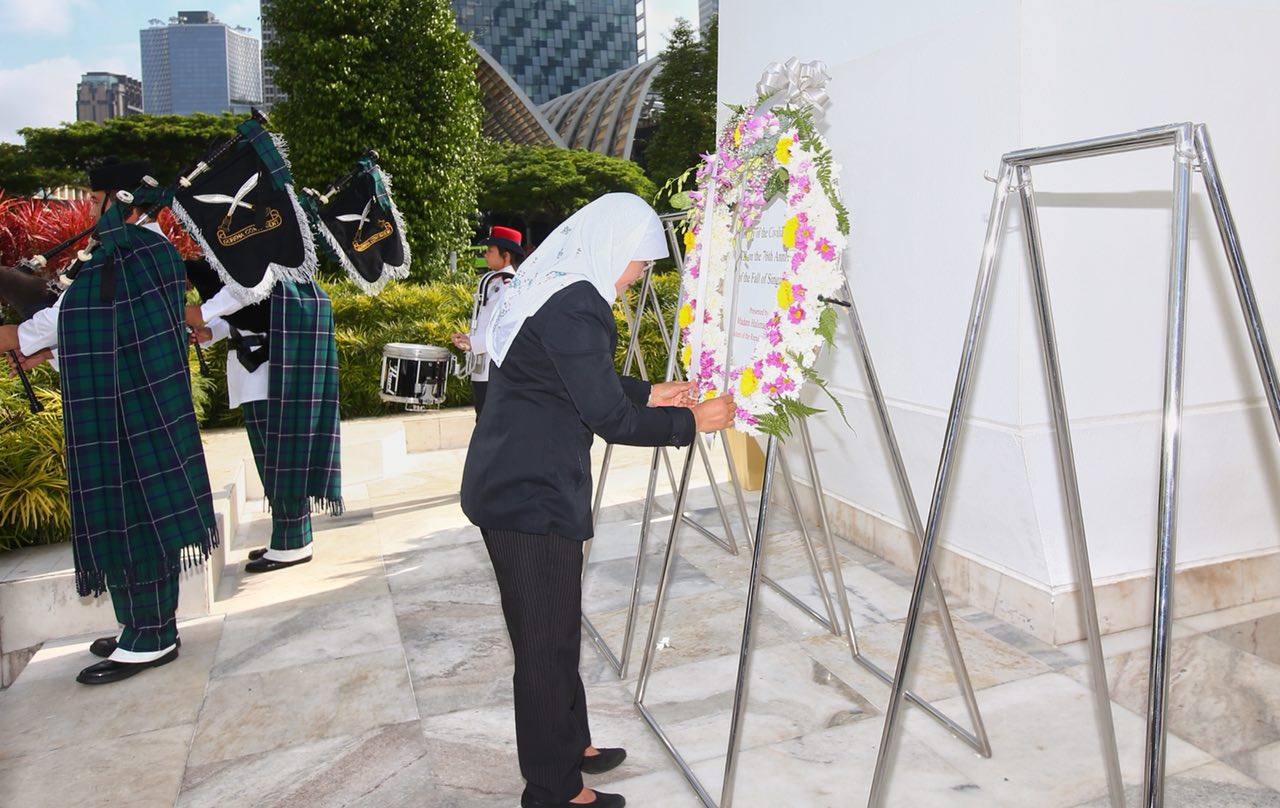51st War Memorial Service commemorates civilian victims of the Japanese Occupation
Sign up now: Get ST's newsletters delivered to your inbox

President Halimah Yacob laying a wreath at the foot of the 67m-high war memorial on Feb 15, 2018.
ST PHOTO: GAVIN FOO
Rahimah Rashith
Follow topic:
SINGAPORE - Mr Chia Chew Soo was only 11 when the Japanese raided his family's farm in Ayer Rajah and killed eight members, including his father, on Feb 14, 1942. A day later, Singapore fell to Japan.
Mr Chia, now 87, was stabbed with a bayonet multiple times, buried with other victims and left to die. He regained consciousness two days later and miraculously survived, after digging himself out. Today, he still bears the bayonet scars.
On Thursday (Feb 15), the anniversary of the fall of Singapore and also Total Defence Day, Mr Chia's family attended the 51st War Memorial Service to remember the civilian victims who died during the Japanese Occupation. Mr Chia was not able to be there in person as he was ill.
About 1,200 people attended the service held at War Memorial Park in Beach Road. It was co-organised by the Singapore Chinese Chamber of Commerce and Industry (SCCCI) and Nexus - MINDEF's Central National Education Office.
The service began with an "all clear" signal sounded by the Singapore Civil Defence Force, followed by silent prayers led by religious representatives from the Inter-Religious Organisation and the observation of a minute of silence.
Also present at the memorial service were families of war victims, diplomats, as well as representatives from SCCCI, business and clan associations, uniformed groups, schools and the Singapore Armed Forces Veterans League.
They took turns to pay their respects at the foot of the 67m-high war memorial, which was built in 1967. Underneath the structure are the remains of unknown war victims.
President Halimah Yacob, the guest of honour at the service, said: "The memorial which stands before us is testament to our multicultural ties - the four tapering columns symbolise the shared experiences and unity among the people of different races in Singapore during the war."
Madam Halimah was referring to the memorial's four vertical pillars, which symbolise the war experiences of the four races here.
"We have all heard accounts of how people helped one another, sharing food out of the little they had, or protecting their neighbours from being hurt or captured," she added. "This legacy of racial harmony will continue to underpin the strength and cohesion of our society, especially as it grows in diversity and complexity. It will help fortify us and keep us resilient even in the face of a crisis."
Correction note: This story has been edited for clarity.

